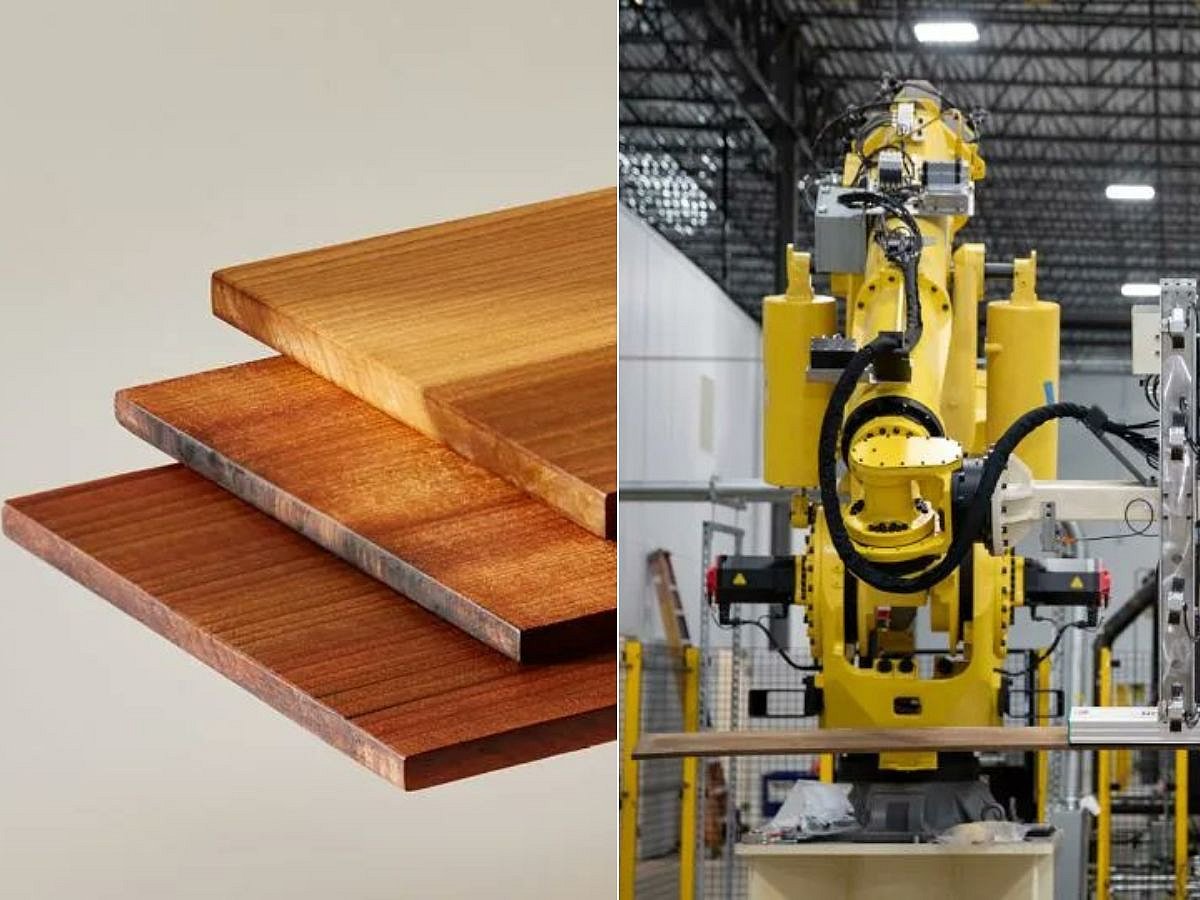'Superwood' could outmuscle steel — and it’s still just wood
Engineered wood has strength-to-weight ratio up to 10x greater than steel, 6x lighter

Get ready to meet the superhero of building materials: a US company has cooked up a wild new type of wood that’s got up to 10 times the strength-to-weight ratio of steel — while being up to six times lighter.
Publishing their work in Nature, inventors are calling it “Superwood,” and it’s officially on the market thanks to InventWood, co-founded by the genius material scientist Liangbing Hu.
Now, here’s the backstory: over a decade ago, Hu set off on a mission to totally shake up one of the oldest building materials known to humans—good old wood.
While rocking it at the University of Maryland’s Center for Materials Innovation (and now a shiny professor at Yale), Hu got super creative with wood.
He even made it transparent by kicking out part of lignin — the stuff that gives wood its color and some muscle. Talk about turning wood into a superhero costume.
But his true goal was to amplify wood’s inherent strength by enhancing cellulose, its main structural fiber and, as he told CNN, “the most abundant biopolymer on the planet.”
Breakthrough
In 2017, Hu made his breakthrough: by chemically treating ordinary wood and reinforcing its cellulose structure, he produced a material that far outperformed traditional timber.
The process involved boiling the wood in a mixture of water and chemicals, then hot-pressing it to densify its cellular structure.
After a week of treatment, the result was a material with a strength-to-weight ratio “higher than that of most structural metals and alloys,” as detailed in Nature.
Now, after years of refinement and more than 140 patents, Superwood is ready for commercial use.
“From a chemical and a practical standpoint, it’s wood,” said InventWood CEO Alex Lau, who joined the company in 2021. He explained that structures made with Superwood could be four times lighter than conventional buildings — making them easier to construct and more resistant to earthquakes.
“It looks just like wood, and when you test it, it behaves like wood,” Lau added, “except it’s much stronger and better than wood in pretty much every aspect that we’ve tested.”
Competitive with steel?
InventWood manufactures Superwood at its Frederick, Maryland facility. The company has streamlined production from days to mere hours, though full-scale manufacturing is still ramping up.
Its initial focus is on outdoor applications like decking and cladding, with interior uses — wall panels, flooring, and furniture — slated for rollout next year.
“People always complain that furniture breaks down over time, and that’s often because it sags or breaks at the joints, which are currently made of metal because wood isn’t strong enough,” Lau said.
“Superwood could replace those metal parts, including screws, nails, and fasteners.”
Long-term, Lau envisions entire buildings constructed from Superwood, though additional testing is required.
19 species of wood tested
Following Hu’s original approach, InventWood chemically modifies the cellulose structure before compressing it to prevent it from springing back.
“In theory, we can use any kind of wooden material,” Lau said. “In practice, we’ve tested 19 different species of wood, as well as bamboo, and it’s worked on all of them.”
According to InventWood, Superwood is up to 20 times stronger than standard wood and 10 times more dent-resistant due to its collapsed and hardened cellular network.
The process also makes it resistant to fungi, insects, and fire, earning it the highest rating in fire resistance tests.
While it currently costs more to produce and has a higher manufacturing carbon footprint than standard wood, Lau emphasized that Superwood’s emissions are 90% lower than steel’s.
“The target is not to be cheaper than wood,” he said, “but to be competitive with steel” once production scales up.
Timber’s comeback
Engineered wood products have long existed, but InventWood points out that these typically bond wood pieces with adhesives — unlike Superwood, which is molecularly transformed.
The launch comes amid a broader timber revival in architecture. In Milwaukee, the world’s tallest timber tower — the 284-foot (87-meter) Ascent MKE — is already standing, with plans underway for a 600-foot (183-meter) wooden skyscraper.
Concrete remains the world’s most used building material, yet its production accounts for 7% of global carbon emissions.
Natural carbon store
Philip Oldfield, professor and head of the School of Built Environment at the University of New South Wales, said timber has clear environmental advantages. It’s less energy-intensive to produce than steel or concrete and acts as a natural carbon store.
“Wood products can be considered a long-term carbon storage system, and construction with wood could see our cities ‘lock in’ carbon emissions in buildings for long periods,” he said.
Oldfield added that existing engineered timber already competes with steel and concrete.
“The barrier to more timber buildings isn’t really the need for more strength,” he explained. “It’s that the construction industry is risk-averse and slow to change.”
He called for more education, pilot projects, and better building codes to encourage timber adoption.
“Stronger timber products like this Superwood could allow architects to create larger spans and more durable finishes,” Oldfield said. “That would certainly be beneficial—and could foster greater timber uptake.”
Sign up for the Daily Briefing
Get the latest news and updates straight to your inbox
Network Links
GN StoreDownload our app
© Al Nisr Publishing LLC 2025. All rights reserved.